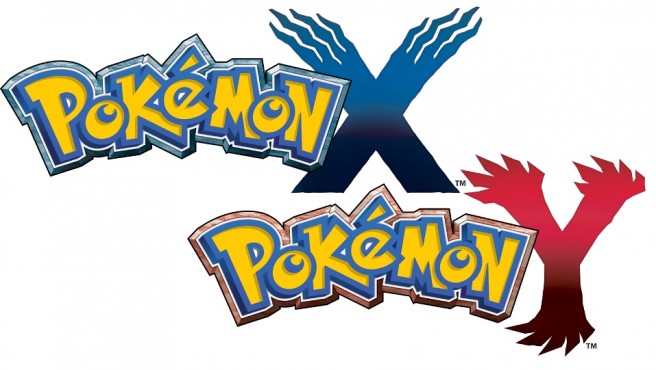Trickster Face interested in Wii U version of Long Night
Posted on 10 years ago by Brian(@NE_Brian) in News, Wii U eShop | 0 comments
Trickster Face is interested in bringing its survival horror project “Long Night” to Wii U. In an interview with 4CR, the studio said it’s something that has been considered since the game’s beginning, and while the team hasn’t fully investigated the eShop’s mechanics, they’d very much like to see a Wii U version happen.
Trickster Face said:
Yes, the Wii U release is something we’ve discussed a lot since the beginning. We haven’t fully investigated the eshop mechanics enough, but it’s definitely something we want to make a reality!
You can find Long Night on Kickstarter here. Trickster Face is looking to raise $10,000 CAD by January 15.
More: indie, Kickstarter, Long Night, Trickster Face
Swords & Darkness footage
Posted on 10 years ago by Brian(@NE_Brian) in 3DS eShop, Videos | 0 comments
More: Arc System Works, Japan, Swords & Darkness
Nintendo still working on eShop issues
Posted on 10 years ago by Brian(@NE_Brian) in 3DS eShop, News, Wii U eShop | 15 Comments
Not much has changed with the eShop’s status since Nintendo shared an update about a day ago. Both digital stores are still down with outages, and the situation continues to be worked on.
Nintendo’s latest message reads:
We apologize for the continued interruption of Nintendo eShop service and are working to resolve the situation. Thanks for your patience.
— Nintendo of America (@NintendoAmerica) December 26, 2013
More: top
Bike Rider DX2: Galaxy – Endless mode footage
Posted on 10 years ago by Brian(@NE_Brian) in 3DS eShop, Videos | 0 comments
More: Bike Rider DX2: Galaxy, Spicysoft
Mario Tennis 3DS Virtual Console trailer
Posted on 10 years ago by Brian(@NE_Brian) in 3DS eShop, Videos | 1 Comment
More: Mario Tennis, Virtual Console
Get a blue refurbished Wiimote and nunchuck set from Nintendo’s online store
Posted on 10 years ago by Brian(@NE_Brian) in News, Wii, Wii U | 0 comments
Nintendo’s online store is now offering a blue Wiimote and nunchuck set. The two can be purchased together for $20 – the same discount price available for the other colored sets. Feel free to place an order here.
Video: “NES Remix – Remix I Stage 4: Get all the coins!”
Posted on 10 years ago by Brian(@NE_Brian) in News | 0 comments
Latest information on potential Sony acquisition of factory producing Wii U’s eDRAM
Posted on 10 years ago by Brian(@NE_Brian) in General Nintendo, News, Wii U | 4 Comments
More information has emerged regarding Sony’s potential acquisition of the factory that’s producing Wii U’s eDRAM. You can find the latest below.
– Sony is now considering an acquisition plan that would require an initial purchase investment of seven billion yen (67 million dollars)
– A further investment of 30 Billion Yen (287 million dollars) is being considered to convert production to CMOS sensors for smartphones
– Sony will likely decide on the pros and cons of the acquisition by January’s end
– An acquisition would save the jobs of about 70% of the 1000 employees, excluding those working on semiconductors for automotive, as the factory was scheduled to close before Sony’s intervention
– The low final purchase price has been determined due to the fact that Renesas is planning to move part of the facilities and equipment of the Tsuruoka factory to its main plant at Naka, in the Ibaraki prefecture
– This leads to multiple possible long run outcomes for Nintendo
– Nintendo still hasn’t announced official plans to relocate the production of Wii U’s embedded DRAM
– If Sony converts only part of the production at Tsuruoka to CMOS sensors and retains the ability to produce the DRAM, Nintendo could acquire the chip from the rival
– If Renesas manages to restore production of the DRAM at Naka, Nintendo could continue to receive stock from there
– In this case, Nintendo would just change the location of manufacturing
– If Sony fully converts the production of Tsuruoka to CMOS sensors and Renesas doesn’t manage or intend to restore production of the DRAM at Naka, Nintendo will have to find another supplier for the long run
– Nintendo’s in-house stocks of the chip are expected to last at least for a while
Pokemon X and Y development details – took 3.5 years to make, over 500 staffers, more
Posted on 10 years ago by Brian(@NE_Brian) in 3DS, News | 5 Comments
Game Freak director Junichi Masuda shared a whole bunch of development information about Pokemon X and Y in a new blog post. You can find a roundup of information below.
– Took roughly 3.5 years to make
– Basic concepts for the games were “beauty,” “bonds,” and “evolution”
– Developed with the idea of players “raising their Pokémon with love”
“There’s an even bigger theme to the game, however; one that I’m always thinking about when I’m directing Pokémon games, and one that I think applies to the real world: ‘Let’s create a better world together’.”
– Masuda feels that the one’s life depends on the chance encounters that they have with other people
– Encounters based on your age or interests or other factors
– These encounters shouldn’t be about fighting, but rather about making a better world together
“The titles ‘X’ and ‘Y’ come from this idea. The letters ‘X’ and ‘Y’ suggest lines on an axis. The lines of both letters head in different directions, but there’s a point at which they cross, or intersect. I used the letters with the idea of intersection in mind; the idea of the common points we share with one another, rather than our differences.”
“It took three and a half years to develop this game. Taking into account the localization groups for each language, more than five hundred people were involved in the development.”
